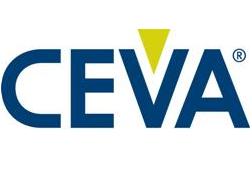Bluetooth 5 low energy IP powers ON Semiconductor’s ultra-low-power radio SoC for IoT and Connected Health

CEVA, Inc., a licensor of signal processing IP for smarter, connected devices, reported that ON Semiconductor has licensed and deployed the RivieraWaves Bluetooth 5 low energy technology in its new RSL10 radio System-on-Chip (SoC).
Capable of supporting the advanced wireless functionalities emerging in IoT and Connected Health and Wellness markets, RSL10 is one of the first Bluetooth low energy 5.0 chips to achieve certification from the Bluetooth Special Interest Group.
“Bluetooth remains at the forefront of connecting IoT devices,” said Michel De Mey, senior director at ON Semiconductor. “CEVA’s RivieraWaves Bluetooth low energy IP, with its ultra-low power performance and advanced features including 2 Mbps was an ideal match with our needs. Our new RSL10 radio SoC uses these features to address a wide range of applications including wearables such as fitness trackers and smart watches, smart locks, and electronics like lighting or appliances.”
“We are pleased to announce ON Semiconductor as a licensee for our RivieraWaves Bluetooth IP” said Aviv Malinovitch, vice president and general manager of the Connectivity Business Unit at CEVA. “The RSL10 is at the leading edge of the next wave of Bluetooth 5 enabled devices and we congratulate ON Semiconductor on their rapid time to market.”
CEVA’s RivieraWaves Bluetooth 5 IP platforms, with Bluetooth low energy and Bluetooth dual mode flavors, consist of a hardware baseband controller, plus a feature-rich software protocol stack. A flexible radio interface allows the platforms to be deployed with either RivieraWaves RF or various partners’ RF IP, enabling optimal selection of foundry and process node.
All the Bluetooth 5 features are supported, including LE 2Mbps data rate, Long Range and LE Advertising Extension.. With more than 1 billion devices shipped to date and dozens of licensees, the RivieraWaves Bluetooth IP is widely deployed in consumer and IoT devices with many of the world’s leading semiconductors companies and OEMs, including smartphones, tablets, wireless headsets, wireless speakers, wearables, and hearing aids.
Comment on this article below or via Twitter @IoTGN

